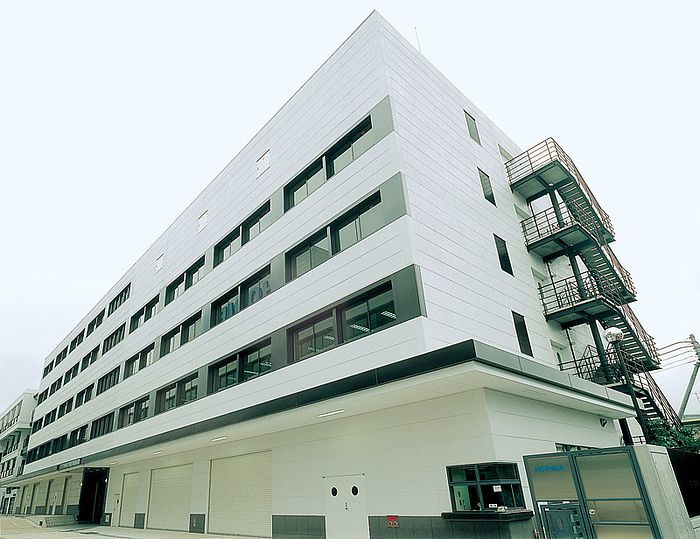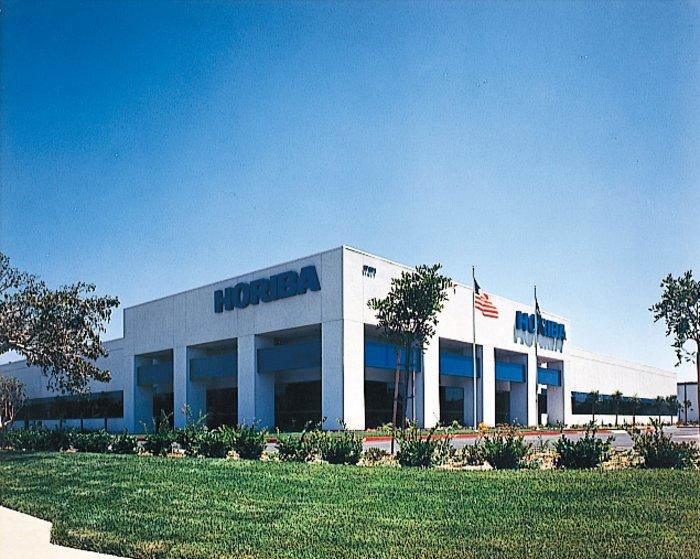History of HORIBA 1990s
A second inauguration and global operations
Start of the Mid-Long Term Management Plan (MLMAP).

The state-of-the-art research and development center, ACTIVE ZONE 21, is completed.

In response to the growing demand for environment measuring equipment in the United States, HORIBA transfers control of its U.S. operations to HORIBA Instruments Incorporated and plans for business
Crystal factory is completed in Arizona, USA.

Air pollution monitors and air pollution monitor cars are presented to the Academy of Science of China.

The manufacture of liquid crystal displays is transferred to Tempe Facility in Arizona, the United States.

FUN HOUSE, a pension-style training facility in Shiga Prefecture, is opened.

HORIBA begins installing a chassis dynamometer for the U.S. Environmental Protection Agency.

HONEST, a PC network that analyzes data on acid rain, is commenced.

Atsushi HORIBA is elected as president and representative director
HORIBA reaches an agreement with Nippon Roche K.K. to market blood cell counters.

CO2 and CH4 monitoring system delivere to the Meteorological Agency’s Marcus Island observation station, which is the 17th World Calibration Center of Background Pollution Monitoring Network (BAPMoN), a part of World Meteorological Organization’s Global Atmosphere Watch program.

HORIBA Europe GmbH opens an office in Sweden to strengthen HORIBA's presence in Northern European countries.

HORIBA begins selling the world’s first cordless pH meter.

HORIBA becomes the first Japanese maker of measuring and analytical devices to receive ISO-9001 approval.
ISO-9001 approval receives from the British Standards Institute (BSI).

HORIBA develops the world's first X-ray microscope analyzer.

HORIBA announces a new international standard automobile emission analyzer developed jointly by the Company’s operations in Japan, the United States, and Europe.

The Beijing Representative Office (China) is established.

HORIBA acquires the specialist blood cell counter maker ABX SA (presently HORIBA ABX SAS), from the Swiss pharmaceutical giant, F. Hoffmann-La Roche SA.

HORIBA launches its Internet home page, GAIAPRESS, which focusses on the theme of preserving the global environment.

HORIBA releases its Castany ACT D-20 series of measuring devices, which feature shock resistant electrodes, water resistant designs, and multi-parameter measuring functions.

Construction of a new five-story head office building is completed.

HORIBA INSTRUMENTS Pte. Ltd. (Singapore) is established.

HORIBA acquires France manufacturer, JOBIN YVON SAS, one of the world’s leading manufacturers of optical equipment.

Clean room for microsensor production is completed.

Inspection equipment for flat panel displays including liquid crystal displays and plasma displays is developed. It is capable of detecting contrast defects in dots and lines.

HORIBA is named as Registered Manufacturer by MITI. This system registers companies recognized as especially superior at quality control.

LC-270 CRP, the world's first blood cell and inflammation measurement equipment is announced.

Dioxin formation observation equipment PG-222 is announced. Dioxin is much in the news for its influence on the general public.

HORIBA aquires Atago Bussan Co., Ltd., a spectroscopic analysis equipment export-import and sales trading company.

HORIBA International is founded as a management company to coordinate the former HORIBA Instruments Inc. in North America.
HORIBA/STEC Inc. is founded to strengthen the HORIBA Group's North American semi-conductor business.

IT-550 series of handy type radial thermometers with narrow field of vision, water proofing and digital output are announced.

U-20 water quality monitoring system with many revolutionary functions such as taking thirteen measurements is announced.

Engine exhaust measurement lab is established in Ann Arbor, North America, where exhaust regulations are strict.